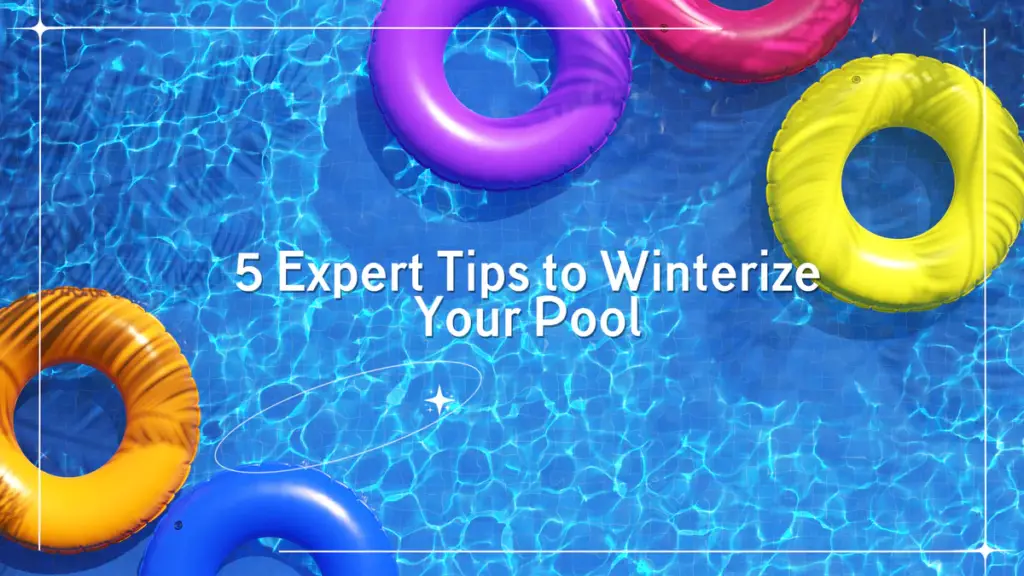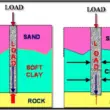Winters can be harsh on your swimming pool if it’s not properly prepared for the colder months.
Closing your pool correctly in the fall can not only extend its lifespan but also prevent potential damage.
Here are six tips to ensure your pool is winter-ready:
- 1. Timing is Key
- 2. Remove Accessories
- 3. Lower the Water Level
- 4. Drain Hoses
- 5. Protect the Skimmer
- 6. Maintain the Filter and Pump
- 7. Plan Ahead for Spring Reopening
- 8. Add Specialized Winterizing Chemicals
- 9. Don’t Drain Your Pool—Here’s Why
- 10.Deep-Clean Every Nook and Cranny
- Additional Tips and Considerations

1. Timing is Key
Closing your pool too early can lead to the growth of algae and microorganisms. Wait until the water temperature drops below 12 degrees Celsius. This helps maintain water quality and makes reopening the pool in the spring much easier.
2. Remove Accessories
Before winter sets in, remove all detachable equipment such as ladders, steps, and diving boards. Give them a good hose down to remove any algae or debris. Ensure they are completely dry before storing them in a designated area, such as a shed or garage corner. Proper organization now will make reinstalling them a breeze when you reopen your pool in the spring.
3. Lower the Water Level
Reducing the water level in your pool is crucial to prevent damage from freezing. Lower the water level to 30-45 cm below the skimmer. Add the recommended products from your pool closing kit. Consult your pool dealer for the ideal water level for your specific pool type.
4. Drain Hoses
Ensure there’s no water left in your hoses to prevent freezing. For above-ground pools, simply unscrew the hoses and drain any remaining water. For inground pools, use a vacuum to remove water from underground hoses. Add antifreeze to prevent freezing damage.
5. Protect the Skimmer
For pools with a bottom drain, disconnect the hose from the skimmer to the drain and add antifreeze. Insert a foam rope into the hose, plug it with an expansion plug, and close the skimmer valve. Place styrofoam or polystyrene pieces in the skimmer to protect it from ice formation.
6. Maintain the Filter and Pump
Follow these steps to prepare the filter and pump for winter:
Like Us on Facebook!
For the pump:
- Disconnect and turn off the circuit breaker.
- Empty out the water and store the pump in a dry place.
For the filter:
- Empty the water and set the valve to “winterize” or “winter”.
- Remove movable parts and store the drain plug in a dry place.
- Wrap the filter to protect it from the elements.
7. Plan Ahead for Spring Reopening
While winterizing is the main focus, savvy pool owners also think ahead to spring reopening. Stock up on chemicals, spare parts, and cleaning supplies during the off-season. Often, you’ll find discounted prices, and you’ll be ready for a stress-free pool opening when warmer weather returns.
Subscribe Us on YouTube!
8. Add Specialized Winterizing Chemicals
Prepare your pool’s chemical balance to endure the winter months. Add chlorine shock to kill bacteria, followed by algaecide to prevent algae growth. It’s essential to maintain water chemistry within specific ranges to ensure the health of your pool. Remember not to mix chlorine shock and algaecide simultaneously, as they can neutralize each other’s effectiveness.
9. Don’t Drain Your Pool—Here’s Why
Although it may seem logical, draining your pool entirely can cause various issues, including ground uplift and structural damage. Generally, your water level should be about one foot below the skimmer for mesh covers and about six inches below for solid covers. Always consult your pool manufacturer’s manual for specific instructions.
10.Deep-Clean Every Nook and Cranny
Pool Cleaning is key when it comes to maintaining a pool. Use a high-quality pool vacuum to clean the floor, manually brush down the walls, and skim the surface for any floating debris. The goal is to have a sparkling clean pool before covering it for the winter, minimizing any surprises when you uncover it next season.
Additional Tips and Considerations
- Contact your manufacturer or dealer for specific winterization advice for your pool model.
- Inform your insurance agent about your pool and consider adding coverage to your home insurance policy for pool and equipment protection.
- Remember, closing your pool is just one step in preparing your home for winter. Explore our article “How to Prepare Your Home for Winter” for more tips.
By following these six tips, you can ensure your swimming pool is properly closed for winter, extending its lifespan and minimizing potential damage. Enjoy peace of mind knowing your pool will be ready to dive into when spring arrives!



















